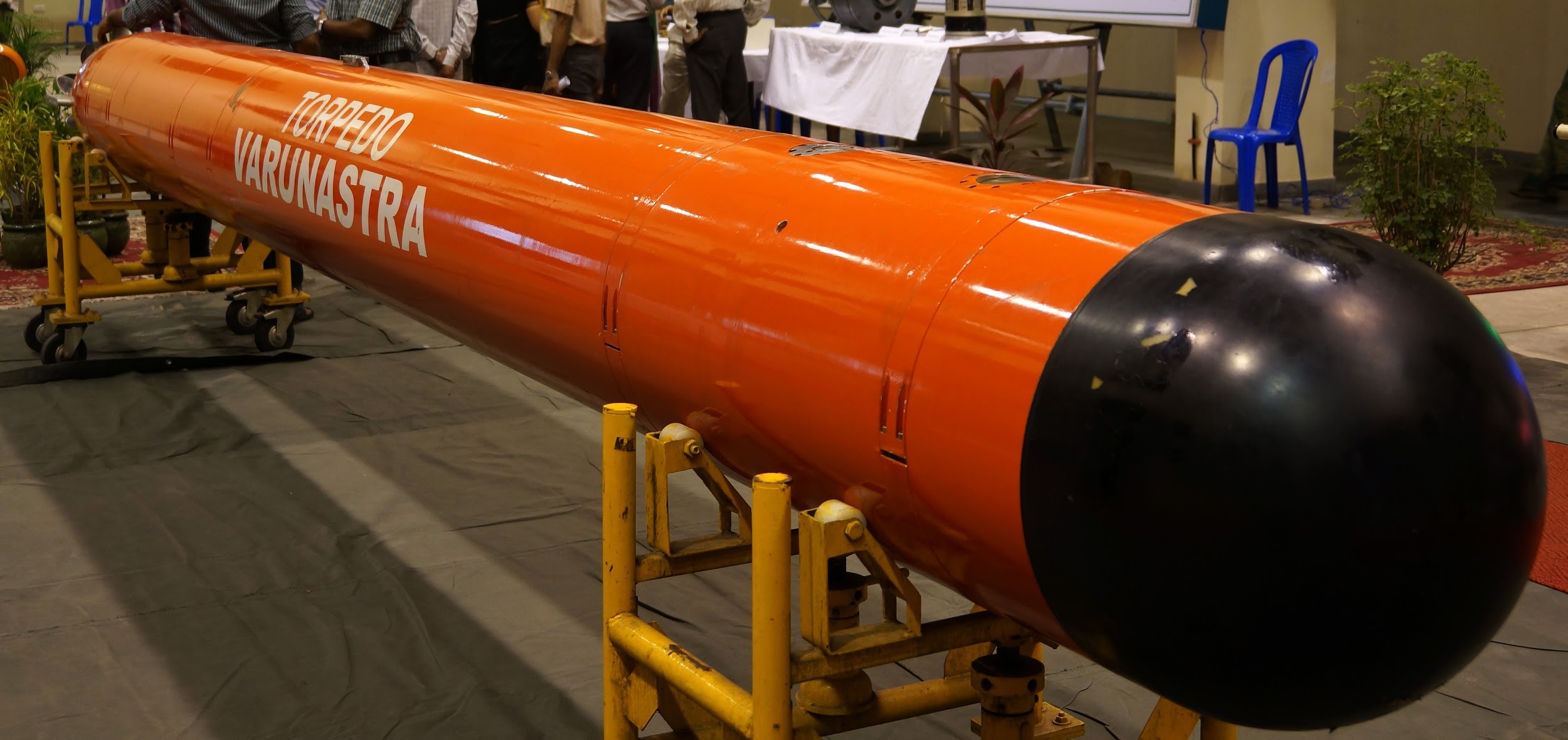Description
 Disclaimer: Copyright infringement not intended.
Disclaimer: Copyright infringement not intended.
Context:The Navy test-fired an indigenously designed and developed heavyweight torpedo, Varunastra, with a live warhead against an undersea target.
About the Varunastra:
- It is an indigenously designed and developed heavyweight, ship-launched anti-submarine torpedo.
- It was designed and developed by the Naval Science and Technological Laboratory in Visakhapatnam under the Defence Research and Development Organisation.
- It will replace the older torpedoes on all naval ships which can fire a heavyweight torpedo.
- It is named after a legendary weapon created by the Hindu god of the oceans, Varuna.
- The-ship launched variant of the Varunastra torpedo was formally inducted into the Indian navy by defence minister Manohar Parrikar and designed by security adviser Satyam Kumar on 26 June 2016.
.jpeg)
Special features of Varunastra:
- The Varunastra torpedo is powered by an electric propulsion system with multiple 250 KWs silver oxide zinc (AgOZn) batteries.
- It can achieve speeds in excess of 74 km/h, weighs around 1.5 tonnes and can carry 250 kg of conventional warhead.
- This torpedo has more than 95 per cent indigenous content.
- It is the only torpedo in the world to have a GPS-based locating aid.
- It is an electrically-propelled anti-submarine torpedo capable of targeting quiet submarines, both in deep and shallow waters.
About Torpedoes:
- Torpedoes are self‐propelled, underwater projectiles that can be launched from ships and aircraft.
- They are designed to detonate on contact or in close proximity to a target.
- The Indian Navy deploys its torpedoes from maritime patrol aircraft, embarked helicopters and surface/subsurface platforms.
Other Indigenous torpedoes of India:
Sheyna:
- It is the first indigenous advanced lightweight anti-submarine torpedo of India.
- The nine-feet-long Shyena torpedo was developed by the Naval Science and Technological Laboratory of the Defence Research and Development Organisation (DRDO) for the Indian Navy in 2012.
- It is designed to be launched by specific ships, submarines and helicopters that are part of the Indian Navy’s assets.
Submarines in India:
- India operates 15 conventional diesel electric submarines which are classified as SSK and one nuclear ballistic submarine, classified as SSBN.
- Of the SSKs, four are Shishumar Class, which were bought and built in India in collaboration with the Germans starting in 1980s
- Eight are Kilo Class or Sindhughosh Class bought from Russia (including the erstwhile USSR) between 1984 and 2000
- Three are Kalvari Class Scorpene submarines built at India’s Mazagon Dock in partnership with France’s Naval Group, earlier called DCNS..
- The Submarine Launched Ballistic Missiles (SLBMs), sometimes called the ‘K’ family of missiles, have been indigenously developed by Defence Research and Development Organisation (DRDO).
- INS Arihant successfully launched a nuclear capable Submarine Launched Ballistic Missile (SLBM)in Oct 2022.
- INS Arihant, which was Launched in 2009 and Commissioned in 2016, is India’s first indigenous nuclear powered ballistic missile capable submarine built under the secretive Advanced Technology Vessel (ATV) project, which was initiated in the 1990s.
- The second submarine in the Arihant class, SSBN Arighat, is reported to have been launched in 2017, and said to be undergoing sea trials at present.
Submarine programmes in India:
- The 30-year plan (2000-30) for indigenous submarine construction, launched in 1999, envisaged two production lines of six submarines each to be built in India in partnership with a foreign Original Equipment Manufacturer (OEM).
- These projects were called P-75 and P-75I.
- A contract for P-75 was signed only by 2005, with France’s DCNS.
- P-75 has delivered three Kalvari Class Scorpene submarines so far but, the P-75I project has not taken off.

Conclusion:
India needs to build indigenous capabilities in submarines and missiles in order to ensure ‘ Minimum Credible deference’. Testing of Varunastra will prove to be long leap towards that direction.
|
PRACTICE QUESTIONS
Consider the following statements about Varunastra:
- It is an indigenously designed and developed heavyweight, ship-launched anti-submarine torpedo.
- It is capable of targeting quiet submarines only in shallow waters.
- It was designed and developed by the Naval Science and Technological Laboratory in Visakhapatnam under the ISRO.
Which of the above statements are incorrect:
- 1 and 2 only
- 2 and 3 only
- All of the above
- None of the above
Ans: 2
|
https://www.drdo.gov.in/varunastra
https://epaper.thehindu.com/ccidist-ws/th/th_delhi/issues/38738/OPS/GBHBATD06.1.png?cropFromPage=true





 Disclaimer: Copyright infringement not intended.
Disclaimer: Copyright infringement not intended.









